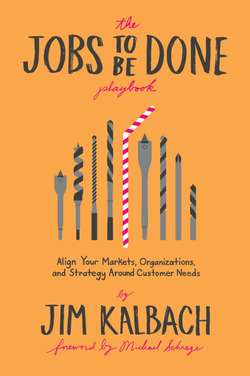Читать книгу The Jobs To Be Done Playbook - Jim Kalbach - Страница 25
На сайте Литреса книга снята с продажи.
EMOTIONAL AND SOCIAL JOBS
ОглавлениеEmotional jobs reflect how people want to feel while performing the job. Statements usually start with the word “feel.” For example, if the main job of a keyless lock system is to secure entryways to home, emotional jobs might be to feel safe at home or feel confident that intruders won’t break in while away.
Social jobs indicate how a job performer is perceived by others while carrying out the job. For instance, adult diapers have an important social job of avoiding embarrassment in public. Or, in the previous example, the person with a keyless door lock might be seen as an innovator in the neighborhood.
Separating functional jobs from emotional and social jobs helps focus on the individual’s objective, on one side, and experiential aspects of getting the job done, on the other. The rule of thumb is to solve for the functional job first. It’s hard to solve for an emotional or social job if the functional job isn’t fulfilled.
I saw this firsthand on a project I once led in the area of online women’s fashion. Most of the discussion revolved around emotional and social jobs of fashion, e.g., feel confident in public or look good to others.
But we found that the key unmet need when purchasing clothes was whether the item fit—a functional job. Even in a domain where emotions dominate, our focus turned to solving the functional job first, not the emotional or social job.
The point is that JTBD provides a sequence for innovation: meet the needs of the functional job first and then layer emotional and social aspects after that. Targeting emotional and social jobs first often yields an endless number of solution possibilities. There are many ways to help customers feel confident in public, for instance. Starting with a functional job grounds innovation in concrete options that are feasible, but emotional and social jobs are not overlooked.
